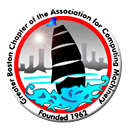To Spelunk or Not to Spelunk: Does Immersive Virtual Reality Help
I will present the results of several scientific visualization experiments at Brown to evaluate visualization environments. Together, the results help to explain some of the tradeoffs between large-format 3D virtual-reality displays (e.g., a Cave) and other display formats. All of the results are motivated by our belief that immersive virtual reality has the potential to accelerate the pace of scientific discovery for scientists studying large complicated 3D problems. The results I will present come from our experiments, which represent a number of different approaches: first, anecdotal reports about scientists using visualization applications; second, performance measurements of non-expert subjects on abstracted tasks; third, evidence about the impact of the virtual environment on performance; and fourth, subjective evaluations by visual design experts. As might be expected when asking which displays performed better, the answer is: it depends on the scientific application, on the tasks used in evaluations, and on the details of the display technologies. I will conclude with some thoughts on how the different evaluation approaches complement each other to give a more complete picture.
David Laidlaw is an Associate Professor of Computer Science at Brown University. His research interests include applications of visualization, modeling, computer graphics, and computer science to other scientific disciplines. He conducts interdisciplinary research into robust and effective tools to solve problems in biology, fluids, medical imaging, archaeology, geology, geography, and other disciplines. Collaborative work with colleagues in these areas guides the research and provides a mechanism for evaluating the usefulness and robustness of results. He received his Ph.D. in Computer Science from the California Institute of Technology in 1995.
